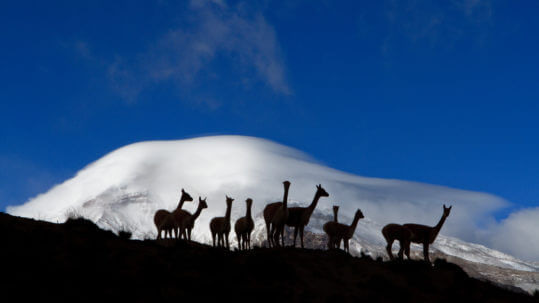
16 Nov What to do in Ecuador to enjoy its Nature?
An overview of Ecuador's diverse nature
On a vacation to Ecuador, there is truly a lot to do. This article specifically focuses on activities related to nature. ‘Diversity’ would be the best single word to describe nature in Ecuador. This South-American country is known for its 4 different microclimates: the hot Pacific Coast, the Andean Highlands, the Amazon jungle and the subtropical Galapagos Islands.
We selected 6 things we think are most interesting to do if you travel to Ecuador and you love nature. They are listed in a random order below.
-1- Whale Watching in Puerto Lopez or the Galapagos Islands
From July to September, humpback whales gather at the coast of Puerto Lopez, because the warm water temperatures are comfortable for their calves. This laid-back coastal town is about 90 kilometers south of the coastal City of Manta. Every year, Ecuadorian as well as foreign travelers gather to Puerto Lopez to experience the impressive spectacle of the gathering of these massive sea animals. Most tourists book day tours to get closer to the whales. However, there are also plenty of tourists who decided to get closer by kayak.
Whale watching tours usually takes up a single full day. Boats leave Puerto Lopez early in the morning to find whales and to get within a close and safe distance from them. It requires some patient, but during high season it’s not uncommon to spot several during a single day trip.
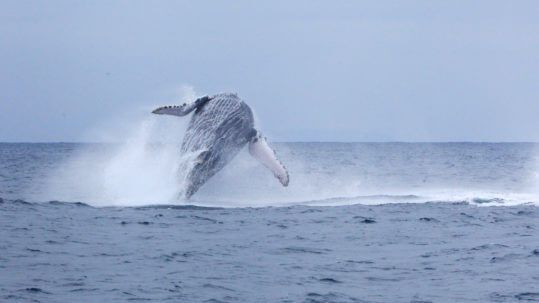
Around the same period, Galapagos has its whale watching high season as well. Outside of the high season, it’s still possible to spot whales. However, you’d need to be more lucky.
-2- Hiking in Ecuador in the Andes and at the Pacific Coast
Ecuador offers a vast array of hiking possibilities. Enough to write a complete book about. In this article, we’ll highlight a selection of possible hikes.
Hiking in the Andes
The Andes, with its highlands, mountains and volcanoes, knows plenty of magnificent hikes. There are several national parks, most are named after the closest volcano. These volcanoes play a central role in the creation and development of its surrounding landscapes. You can hike to the tops of volcanoes such as Cotopaxi or Chimborazo. Many people love the multi-day Quilotoa loop. This hike takes you through the Andean highlands and ends at the crater lake of the Quilotoa.

Two hikes which are less known by tourists, but loved by the Ecuadorians are the Rucu and the Refugio de Vida Silvestre Pasochoa. Rucu is in the mountains just outside Quito. You’ll get here with the Teleferico. This hike gives you a beautiful panorama over the city of Quito.
Refugio de Vida Silvestre Pasochoa is about an hour away from the city by car. Here, you’ll find some beautiful creeks waterfalls and panoramas.
Hiking at the Pacific Coast
At the Pacific coast, about 20 kilometers south of Manta, you’ll have the Wildlife Coastal Pacoche refuge. Here you can hike while being surrounded by monkeys. We recommend going with a guide. They know exactly where the wild animals are hiding. Without their help, you’ll spot way less wildlife.
Another great place to hike is the Machalilla national park. This is close to the earlier mentioned whale watching areas of Puerto Lopez. Here, you’ll find some amazing coastal views and you can combine your hike with a stop at the beach for a swim.
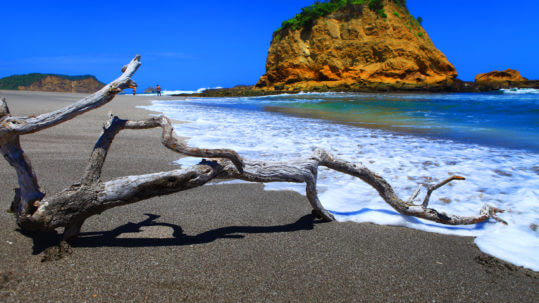
Hikes at the Pacific coast are beautiful, be you need to plan and prepare well, because it can be very hot at times.
-3- Galapagos Islands
Each island of the Galapagos is great for hiking as well. However, this subtropical archipelago offers so much more than that. The natural sights blend smoothly with its exceptional wildlife.
The jungle of the Amazon, the Volcanoes of the Andes and the beaches at the Pacific Coast are all fantastic and worth a visit to Ecuador. However, the Galapagos Islands are truly Ecuador’s icing on the cake. There is only one Galapagos in the world. A visit is truly unique and should be number one on your bucked list if you are a nature lover and interested in Ecuador.
The Galapagos Islands' remoteness resulted in exceptional wildlife
The Galapagos Islands are over 850 miles into the Pacific Ocean. Therefore, humans had not discovered it until a few centuries ago. This gave the local wildlife the chance to develop like nowhere else in the world. That’s why the Galapagos islands were the main source of inspiration for Charles Darwin’s evolution theory. It’s an incredible experience to visit this archipelago. Most wildlife is not afraid of people and you truly feel like a guest in their world.
You’ll encounter giant turtles while you’re out for a hike. At the beautiful beaches, you’ll see iguanas. When you go for a swim, you may be accompanied by sealions. Seals hang out at the local outdoors markets. There are plenty of impressive birds to be found as well, such as the blue footed booby. You can spot Penguins at the Galapagos islands. And a lot more…
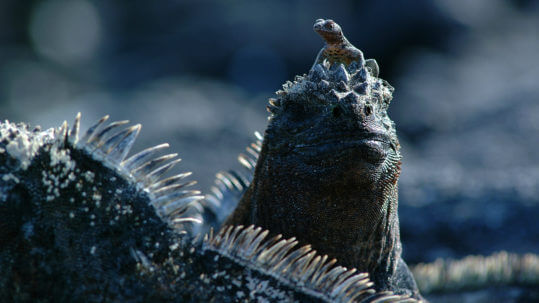
Those are just example on land. The Galapagos Islands are a dream destination for scuba divers too. There are sharks (whale, white tipped, hammerhead), rays, marine iguana, turtles, dolphins, etc. Many scuba divers take a multiday cruise to hop from one diving hop spot to the other. If you don’t know how to scuba dive, we’d recommend to at least go snorkeling.

The Galapagos' landscapes are like no other tropical island
Let’s not forget about the landscapes at the Galapagos Islands. These remote volcanic islands are filled with beautiful natural sights. Like the white sand beach of Tortuga Bay, the black beaches at Floreana or the rock formations at Santa Cruz.
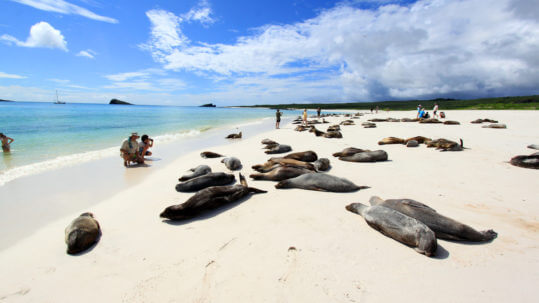
Of course, at a Volcanic archipelago, you don’t want to skip the volcanos. The island Isla Bartolomé is an inactive volcano and is known for its Playa Dorada (Golden Beach) and the Galapagos Penguins.
The Sierra Negra Volcano is one of the world’s biggest Volcanoes. Here, you’ll notice a great diversity in colors in the soil, because the volcano spat out different layers from the earth’s inside. You can still see Magna and smoke coming out of this most active volcano of the Galapagos Islands.
-4- The Ecuadorian Volcano Avenue
We’ll go back to the Andes at Ecuador’s mainland to explore more volcanoes. As the German explorer and scientist Humboldt said: “Ecuadorians are strange and unique beings; they sleep peacefully surrounded by roaring volcanoes”.
The Andean volcano belt runs straight through the center of Ecuador. Following the Pan-American Highway, you’ll encounter many volcanoes within a 200km drive. Cotopaxi, Quilotoa and Chimborazo are the most famous ones. However, Ecuador has a total of 48 volcanoes. 27 of these are “potentially active” according to the Ecuador Geophysical Institute. Meaning these volcanoes are currently inactive, but they could become active again. That’s why authorities are constantly monitoring them.

The Cotopaxi Volcano had some activity spurs over the last decade. The most recent was an incident of ash spewing back in 2017. Sangay is even an actively erupting volcano. It’s far away from civilization, but it’s smoke and lava are often spotted from as far as Quito.
You can enjoy Ecuador’s volcanoes in several ways. There are day trips which mostly start from Quito. By rental car, you can drive to the national parks on your own. Many volcanoes have fantastic hiking paths in its surroundings. Or you can have yourself driven up and go downhill by mountain bike. You could even go mountain climbing. There are climbs to altitudes above 5000m, but climbing at those altitudes is tough and not for everyone.
-5- Wildlife Watching in the Amazon
Latin-America’s most famous sceneries are the Andes and the Amazon, both cover Ecuador. We already discussed the Andes, but the Amazon is most definitely worth a visit as well. The Amazon stretches from Venezuela to Bolivia and from Ecuador to Brazil. At the eastern half of Ecuador, the Amazon starts where the Andes ends.
Due to the dense and untouched nature in this jungle, rivers are an essential part of the Amazonian infrastructure. Everything moves by canoes. Therefore, most human(!) life is around rivers.
In the case of the Ecuadorian Amazon jungle, the Napo is its most important river. Almost every tour you’ll take, starts and finished by canoe on this river. The Napo river finds its origin at the foot of the Cotopaxi. It makes its way through Papallacta and Baños to enter the Ecuadorian Jungle in Tena. The river continues straight throughout the Ecuadorian Amazon until it crosses the western border with Peru.
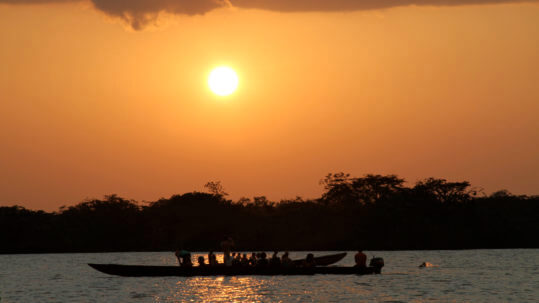
The amazon’s wildlife is as diverse as its flora. To see its wildlife, you’d need to take a tour. First, because the guide will know where to find the animals. And second, because it’s very dangerous without.
If you want to see wildlife in the amazon, you can think of activities such as spotting animals straight out of the canoe by day or by night. You can look for fresh water pink dolphins, caymans, snakes, turttles, monkies, etc. There are thousands of species of birds. You could go fishing for Piranhas. The wildlife sanctuary in Misahualli is also worth a visit. And of course, while seeing the wildlife, you spot all the interesting flora as well.
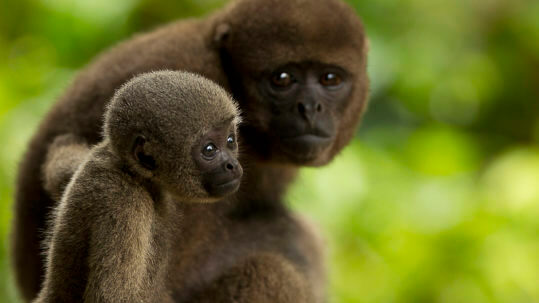
Where in the Ecuadorian Amazon can I go?
In a nutshell, you would have two main options. You can go to Tena and its surrounding by car or to the Yasuni national park by domestic flight. Tena really does give you a proper Amazon jungle experience and it could be more convenient in combination with the rest of your itinerary.

However, a visit to the Yasuni national park will give you a truly unforgettable jungle experience. Via the Coca-airport, you’ll be instantly deep into the Ecuadorian jungle. Meaning, far away from anything which resembles a western-society. Many communities in the Yasuni national park still live according to their ancestors’ traditions, beliefs and habits. If you want, you can stay with an indigenous family.
-6- Bird and butterfly watching in Mindo
Just two hours by car from the hustle and bustle of Ecuador’s capital Quito, you’ll find Mindo. It’s a north-western Andean valley and Ecuador’s main destination for bird watchers. Its climate is very comfortable. In the evening, it cools down a bit, but during the day many tourists tube down the river. Mindo is a cloud forest where clear sky and misty weather alternate.
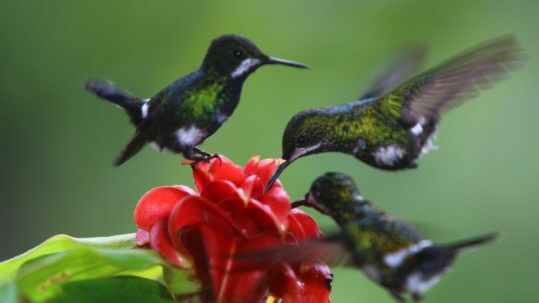
In Mindo, you simply cannot miss the many hummingbirds which are truly everywhere. This place is perfect for hikes in its cloud forest. We’d recommend going on a tour with a guide. This increases your changes of seeing as many as possible from its over 500 recorded different species of birds. Such as hummingbirds, woodpeckers, swifts and many more.
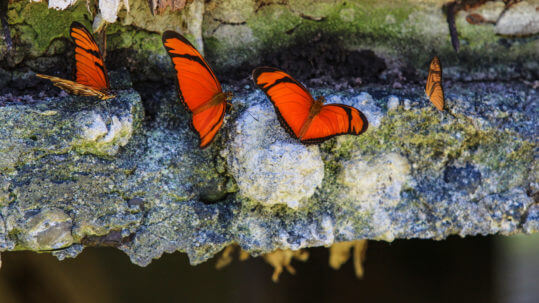
Besides the diversity in birds, Mindo is also known for its many butterflies. In the butterfly Sanctuary, you can see many of the species floating by, while you sit back and enjoy their beauty.
Cowritten by: Carolina Loza León and Bram Weites
Are you looking for more information about traveling to Ecuador?
At What To Do in Ecuador?, you’ll find an easy and inspirational summary of what to do in Ecuador.
In the blog, you’ll find more stories about travelers’ experiences. You’ll find articles comparing best places to visit and there are several articles giving you practical travel tips.
At Services, you’ll see how South Trips can help you during your trip. You can think of as little as an airport pick-up, the organization of a part of your trip, or as much as a complete day-to-day organized vacation. Any support is always completely personalized.
If you have any questions about Ecuador, traveling to Ecuador or something you did, or did not read at our website, don’t hesitate to contact us. We’re happy to answer all questions.
No Comments